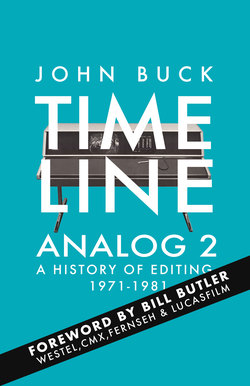Читать книгу Timeline Analog 2 - John Buck - Страница 13
На сайте Литреса книга снята с продажи.
TOSHIBA
ОглавлениеIn October 1971, Tokyo Shibaura Electric (Toshiba) delivered an automated editing system to the Kansai Telecasting Group in Osaka. Engineers Rokuro Shimada and Susumu Akatsuka had created a new A/B roll system that used helical scan machines to deliver an offline capacity to the television station.
Editors used a dedicated editing control console to edit copies of the original Quad material transferred to the cheaper decks that also offered playback, slow motion and still frame capabilities.
Much like the CMX, the Toshiba system displayed the exit frame of the A machine on one monitor and the entrance frame of the B machine on the other. The edit decisions were ‘memorized’ by the TOSBAC-3000 process computer and punched out to a paper tape.
The process of using the edit list to create a master that CMX had called assembly was called 'Collation' on the Toshiba. The engineers claimed that a program with “forty cuts would require four minutes at most to collate”.
The conform began with the Toshiba Random Access Controller (RAC) running the Ampex RA-4000 and two quadruplex machines with the original A/B rolls to create a master tape of the edited sequence. If no changes were required the process could be carried out “with no human intervention” but Toshiba had even made an allowance to let the editor continue working on the offline sequence with the helical VTRs while the program compilation began.
For Kansai Television it was a breakthrough in staffing and resource management. One editor could achieve what had previously needed three staff and multiple 2” machines were only required during the assembly period.
Toshiba claimed that the editing control had been specifically designed to protect against faulty operation and to accommodate editors from the production area and who it was believed were ‘lacking in technical background’. There was even a dedicated button on the console that allowed the original Quad tapes to be copied to helical decks automatically.
While the Toshiba, CMX and CDL system all used microcomputers that were using 1960s technology. Two paradigm changes that were just around the corner would see the end of the era of computer hardware and film based production.
